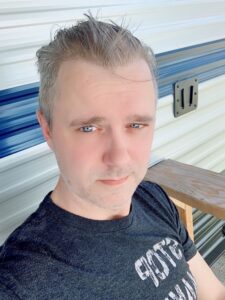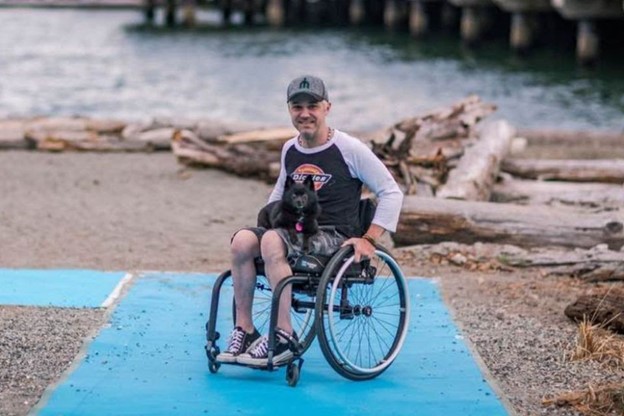24 Jan Luke Shantz
 I prefer to start my story from the end, because who doesn’t like a happy ending. Right? Or at least an ending in which the bad guy doesn’t win. I enjoy life with my service dog Sophie, spending winters in tropical Colombia and summers on an island near Seattle, WA. I am in my third year of serving as a member of PEER, and many of you probably know me from the UDN Families Facebook group. If not, I encourage you to join and say hi!
I prefer to start my story from the end, because who doesn’t like a happy ending. Right? Or at least an ending in which the bad guy doesn’t win. I enjoy life with my service dog Sophie, spending winters in tropical Colombia and summers on an island near Seattle, WA. I am in my third year of serving as a member of PEER, and many of you probably know me from the UDN Families Facebook group. If not, I encourage you to join and say hi!
My story starts as a normal kid in high school without any serious medical conditions besides knee reconstructions, broken bones, and a fused lumbar disc from the multiple sports I was involved with. I loved to rock climb, ski, and was on the school’s soccer, baseball, and tennis teams. I even did a little bit of car racing at the local racetrack.
I first started to notice that something was wrong while playing basketball with a friend. I didn’t have the coordination that I thought that I normally had. A few weeks later, my parents noticed a change in my gait, and thinking it might be injury related they took me to see my Sports Medicine specialist. He immediately made an emergency referral to have a brain MRI and to see a neurologist. The worst was expected: a brain tumor!
This happened on a Friday, so I spent three days thinking about brain tumors in what turned out to be one of the longest weekends of my young life. Early the following week a brain tumor was ruled out, and thus began my 20-year journey of being undiagnosed. I saw specialists at numerous local hospitals and universities, and had virtually every neurological test available. No need to bore you with the names of all the testing, but as many of my fellow neurological disease sufferers know, they are some of the most painful tests done in modern-day medicine.
After endless testing the doctors were stumped, and I was tired of being a pin cushion. It was assumed that I had some sort of spastic paraparesis, but they couldn’t tell me why nor offer a treatment beyond physical therapy. So I just stopped going to the doctor for the next 15 years, learned to live with my symptoms and overcome the effects of the disease with exercise and youthful resilience.
As the disease and my symptoms progressed, I decided that it was time to see a neurologist again. I went through the trial and error process of trying neurologic medications on an off-label basis just to see if they might help control the muscle spasticity in my legs. Nothing oral was effective, so I decided to try an intrathecal baclofen pump. No dice! So again, I gave up.
A few years later my mom, who is a nurse, read about the NIH and UDN in a nursing magazine. I applied, and to my surprise was accepted. I had my first week-long visit at NIH a few months later, which encompassed repeating all previous testing, some new neurological tests which were equally as unpleasant as the others, and a full genome sequencing (WGS) workup.
All the testing, including the WGS, came back negative or inconsequential. My team at NIH still believed the disease to be genetic in origin, but my wait for a diagnosis continued. I returned to see my team for a few days a year and a half later for more testing, this time including mitochondrial genetic testing. Still nothing. Nada!
Then, unexpectedly, came THE phone call. In spring of 2018 my team, in collaboration with a researcher in Canada, were finally able to diagnose the disease that had started this medical journey that I began 20 years prior. My official diagnosis is SPG #76, the 76th SPG discovered in the hereditary spastic paraplegia group of inherited diseases whose main characteristic is a progressive gait disorder.
I know what you’re thinking, “SPG #76? That’s a boring name for a disease.”
Well, the gene affected is named CAPN1 which I think is much better sounding. You can now refer to me as the captain! I guess that’s how I try to live my life, even through my very recent and unrelated battle with cancer. “Invictus” meaning unconquered is my favorite poem and how I look at my life, now diagnosed but still without a treatment.
In a hospital bed while trying to save his second leg from being amputated, William Ernest Henley began to write the famous poem that ends in: “I am the master of my fate, I am the captain of my soul.” I think of this poem often and try not to let my disease or anything else stop me from what I want to do in life.
“INVICTUS”




